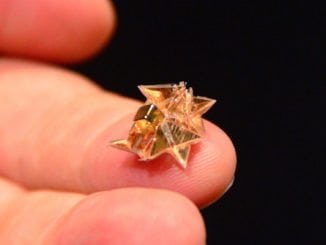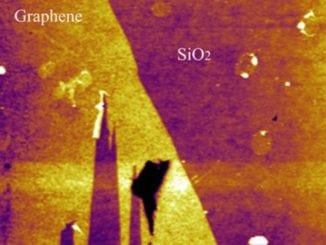The article was co-authored by Dr. Avinash Tiwari, Postdoctoral Researcher at Forschungszentrum Jülich.
Origins of Sliding Friction
Origin of sliding friction: role of lattice trapping
Author of the article
The article was co-authored by Dr. Jianjun Wang, a visiting scholar at Forschungszentrum Jülich, EU and associate professor at Zhongyuan University of Technology, China
The friction force acting on a block sliding on a substrate is usually nearly velocity independent unless the sliding speed is so low that thermal activation is important, or so high that frictional heating becomes important. A velocity independent friction force results if rapid processes occur at the sliding interface, involving local slip velocities unrelated to the macroscopic drive velocity. One important topic in tribology is to understand the origin and nature of the rapid slip events, which generate the sliding friction force [1].
The friction force is usually proportional to the normal force (Amonton’s law). This result follows quite general from the theory of the contact between elastic solids with random surface roughness [2-4]. Thus, the area of real contact is usually proportional to the normal force. This results from the fact that for a large system, when the normal force increases the number of asperity contact region increases proportional to the normal force, but the distribution of asperity contact areas and the (contact) stress distribution are unchanged. It follows that the friction force will be proportional to the normal force independent of the nature of the microscopic frictional interaction at the asperity level, e.g., independent of how the friction force acting on an asperity depends on the asperity contact area.
In ref. [5] (see also [6]) Wang et.al. presented a molecular dynamics (MD) study of the dependency of the friction force on the sliding velocity when an elastic slab (block) is sliding on a rigid substrate with a ![]() surface height profile. The atoms on the block interact with the substrate atoms by Lennard-Jones potentials. The study showed that the friction force is due to lattice pinning: at the opening and (to a lesser extent) the closing crack tips atoms snap-out (and -in) of contact in rapid events, with atom velocities unrelated to the block driving speed, followed by “long” time periods where the crack tips are pinned (see enclosed movies 1 and 2). In the rapid slip events, elastic waves (phonons) are emitted from the crack tips (see Fig.1), resulting (for the opening crack) in a larger crack propagation energy than the adiabatic value. This effect is closely related to lattice trapping, the velocity gap and hysteresis effects observed in model studies of crack propagation in solids.
surface height profile. The atoms on the block interact with the substrate atoms by Lennard-Jones potentials. The study showed that the friction force is due to lattice pinning: at the opening and (to a lesser extent) the closing crack tips atoms snap-out (and -in) of contact in rapid events, with atom velocities unrelated to the block driving speed, followed by “long” time periods where the crack tips are pinned (see enclosed movies 1 and 2). In the rapid slip events, elastic waves (phonons) are emitted from the crack tips (see Fig.1), resulting (for the opening crack) in a larger crack propagation energy than the adiabatic value. This effect is closely related to lattice trapping, the velocity gap and hysteresis effects observed in model studies of crack propagation in solids.
If ![]() denote the friction force, the dissipated energy during sliding of the distance
denote the friction force, the dissipated energy during sliding of the distance ![]() is
is ![]() , and if the friction is due entirely to energy dissipation at the opening and closing crack tips, then
, and if the friction is due entirely to energy dissipation at the opening and closing crack tips, then ![]() , where
, where ![]() and
and ![]() are the opening and closing crack propagation energies (per unit surface area). The friction coefficient
are the opening and closing crack propagation energies (per unit surface area). The friction coefficient ![]() with the normal force
with the normal force ![]()
(1) 
Where,
![]() = Adiabatic work of adhesion
= Adiabatic work of adhesion
![]() = Work of adhesion at the opening crack
= Work of adhesion at the opening crack
![]() = Work of adhesion at the closing crack
= Work of adhesion at the closing crack
![]() = Dimension of the system in X and Y directions.
= Dimension of the system in X and Y directions.
![]() = External nominal pressure
= External nominal pressure
Since ![]() and
and ![]() are independent of the applied pressure
are independent of the applied pressure ![]() , (1) predicts that the friction coefficient
, (1) predicts that the friction coefficient ![]() i.e., the friction force is independent of the applied normal force. The MD calculations show that the friction coefficient is proportional to
i.e., the friction force is independent of the applied normal force. The MD calculations show that the friction coefficient is proportional to ![]() , confirming that for our system the friction is entirely due to the emission of phonons from the opening and the closing crack tips.
, confirming that for our system the friction is entirely due to the emission of phonons from the opening and the closing crack tips.
Movie 1 (Squeezing in contact):
An elastic block (thickness 276 Angstrom, Youngs modulus 10 MPa) is squeezed against a rigid cylinder-corrugated substrate with the nominal squeezing pressure 0.1 MPa. For zero temperature and with very weak adhesion (Lennard-Jones interaction, corresponding to a binding energy per unit surface area 0.0027 J/m2). Only the first layers of atoms at the interface is shown in the movie.
Movie 2 (Sliding):
The block moves to the right with the speed 0.1 m/s. The friction force is entirely due to processes occurring at the opening crack tip where atoms snap out of contact in rapid events. The speed of these rapid events is unrelated to the block sliding speed and result in elastic waves (phonons) being emitted from the crack tip. The result is a nearly velocity-independent sliding friction force. The effect is closely related to lattice trapping, the velocity gap and hysteresis effects observed in model studies of crack propagation in solids.
Further information: Wang, J., Tiwari, A., Sivebaek, I. M., & Persson, B. N. J (2020). On the origin of sliding friction: Role of lattice trapping. arXiv preprint arXiv:2002.09300.
References
- B.N.J. Persson, Sliding friction: Physical principles and applications, Springer, Heidelberg (2000).
- B.N.J. Persson, I.M. Sivebaek, V.N. Samoilov, K. Zhao, A.I. Volokitin, Z. Zhang, On the origin of Amonton’s friction law, Journal of Physics: Condensed Matter 20, 395006 (2008), https://doi.org/10.1088/0953-8984/20/39/395006.
- B.N.J. Persson, Theory of rubber friction and contact mechanics, The Journal of Chemical Physics 115, 3840 (2001), https://doi.org/10.1063/1.1388626.
- B.N.J. Persson, Contact mechanics for randomly rough surfaces, Surface Science Reports 61, 201 (2006), https://doi.org/10.1016/j.surfrep.2006.04.001.
- Wang, J., Tiwari, A., Sivebaek, I. M., & Persson, B. N. J (2020). On the origin of sliding friction: Role of lattice trapping. arXiv preprint arXiv:2002.09300.
- Wang, J., Tiwari, A., Sivebaek, I., & Persson, B. N. J. (2020). Sphere and cylinder contact mechanics during slip. arXiv preprint arXiv:2002.02226.

































